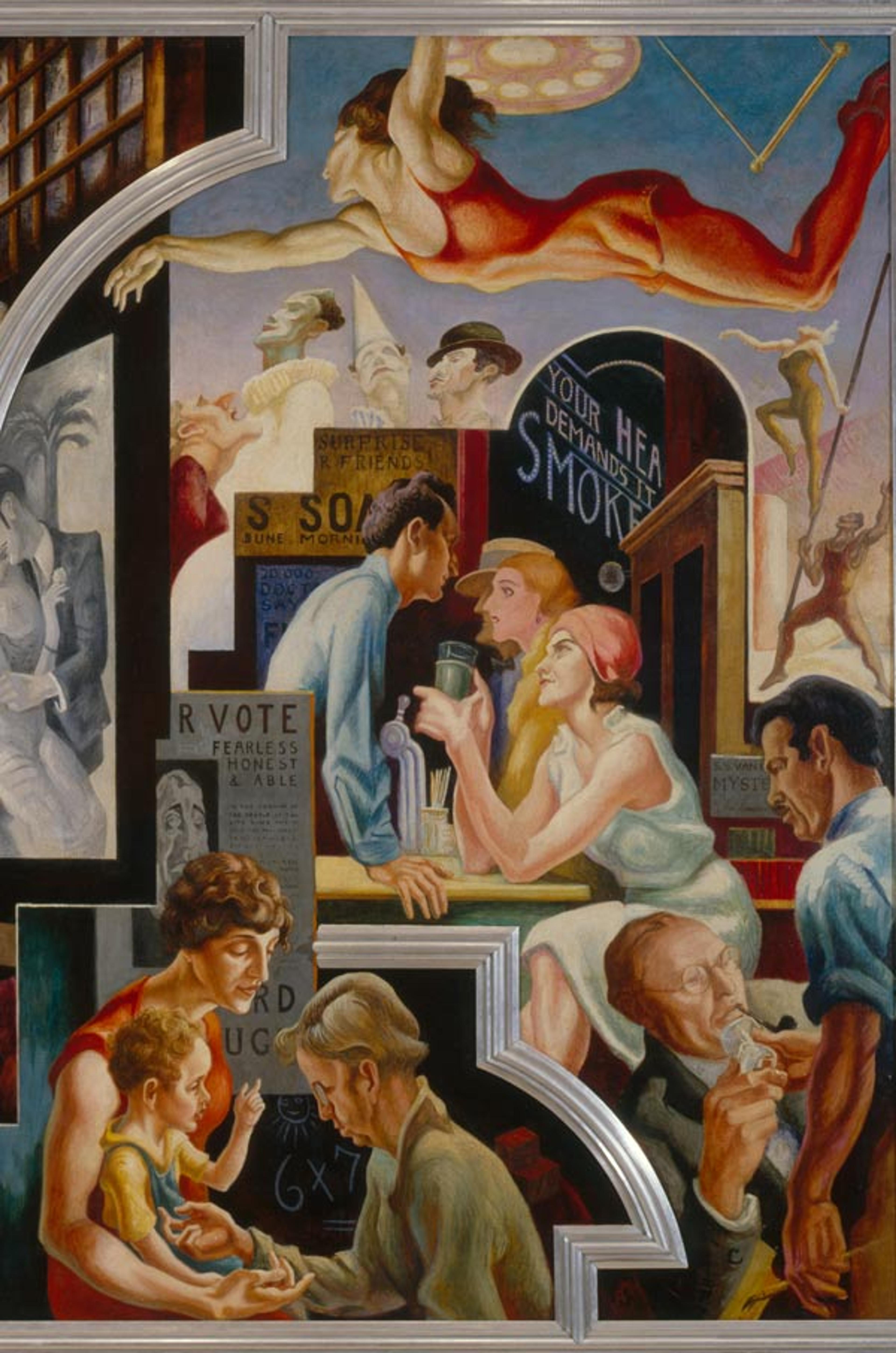Thomas Hart Benton (American, 1889–1975). City Activities with Dance Hall from America Today (detail), 1930–31. Mural cycle consisting of ten panels. Egg tempera with oil glazing over Permalba on a gesso ground on linen mounted to wood panels with a honeycomb interior. The Metropolitan Museum of Art, New York, Gift of AXA Equitable, 2012
«Thomas Hart Benton's America Today Mural Rediscovered is a bold exhibition. The imagery on the ten canvas panels begs for surround sound. The husky black train barrels forward, its smokestack billows, and its whistle shouts, "Woo-woo!" The airplane's propellers whir. And women in provocative, swishy dresses dance to popular jazz songs of the 1920s. (Twerking's got nothing on these gals.)»
I visually sweep from scene to scene and view the construction of the United States. There are rural and urban scenes, dramatic images of black laborers in the fields, and the New York City skyline. There are vivid portrayals of coal miners, steel workers, cowboys, farmers, dancers, prostitutes, businessmen, and a preacher. The entire country works hard and plays hard. Then, on the final panel, outstretched hands reach toward bread and coffee, symbolizing the desperate times of the Great Depression.
The images cement the 1920s in my mind. Midwesterner Benton paints figures that are larger than life. The subject matter is in your face. I cannot help but look and gaze, and imagine being in the scenes and hearing the noises of the settings. Benton said, "I don't know whether it's art or not, and I don't care. What I wanted was to show the energy and rush and confusion of American life." And he captures the essence of the United States over the course of the decade.
The massive floor-to-ceiling panels are powerful and the silver moldings provide ingenious spatial breaks within the large mural. The work is full of details. Benton painted himself in one scene, and in another area he depicts his family. Behind his wife and son is a chalkboard with "6 x 7" written on it. The sum adds up to forty-two, his age upon completion of the work.
I return to each panel again and again and see another slice of life during that period. And each one continues to intrigue me.
